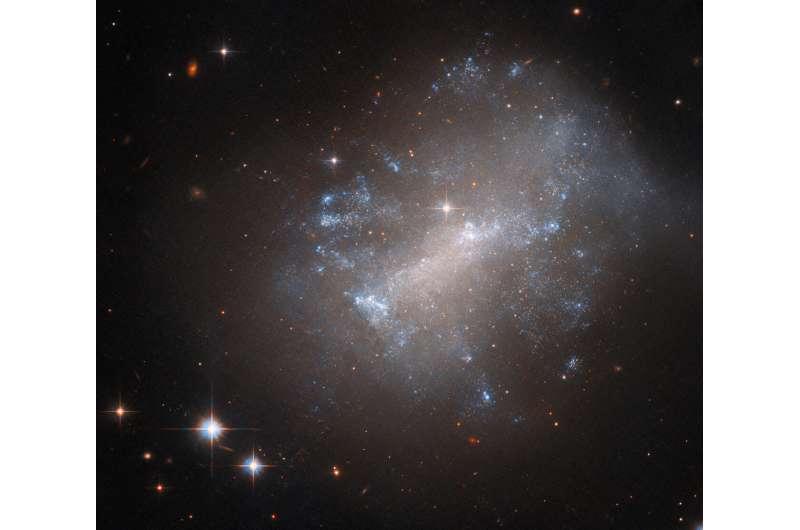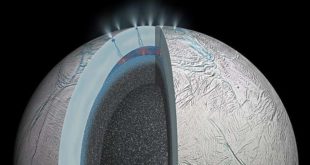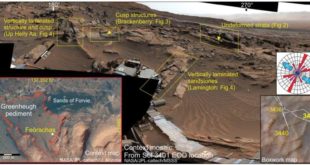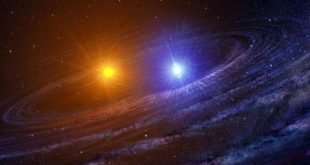
The galaxy NGC 7292 billows across this image from the NASA/ESA Hubble Space Telescope, accompanied by a handful of bright stars and the indistinct smudges of extremely distant galaxies in the background. It lies around 44 million light-years from Earth in the constellation Pegasus.
This galaxy is irregular, meaning that it lacks the distinct spiral arms or elliptical shape of some galaxies. Unusually, its core is stretched out into a distinct bar, a feature seen in many spiral galaxies. Alongside its hazy shape, NGC 7292 is remarkably faint. As a result, astronomers classify NGC 7292 as a low surface brightness galaxy, barely distinguishable against the backdrop of the night sky. Such galaxies are typically dominated by gas and dark matter rather than stars.
Astronomers directed Hubble to inspect NGC 7292 during an observational campaign that scrutinized the aftermath of Type II supernovae to learn more about their diversity. These colossal explosions happen when a massive star collapses and then violently rebounds in a catastrophic explosion that tears the star apart.
Astronomers observed NGC 7292’s supernova in 1964 and named it SN 1964H. Studying the stellar neighborhood of SN 1964H helps astronomers estimate the initial mass of the star that went supernova. Observations could help uncover surviving stellar companions that once shared a system with the star that became SN 1964H.
Provided by
NASA’s Goddard Space Flight Center
Citation:
Hubble captures galaxy NGC 7292 (2023, June 16)
retrieved 17 June 2023
from
This document is subject to copyright. Apart from any fair dealing for the purpose of private study or research, no
part may be reproduced without the written permission. The content is provided for information purposes only.
 Innovation Discoveries Latest Scientific Discoveries in Innovation
Innovation Discoveries Latest Scientific Discoveries in Innovation



